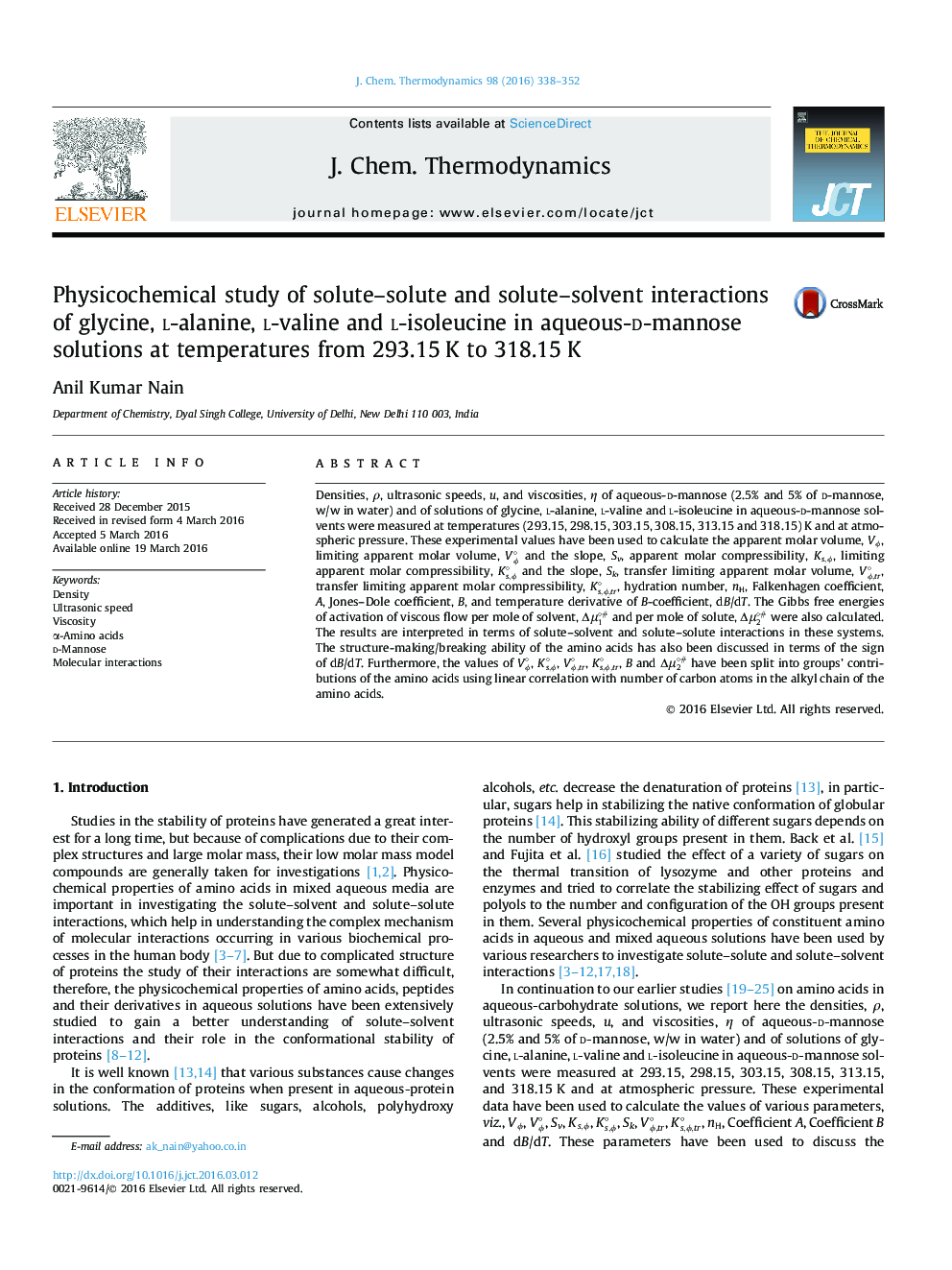| Article ID | Journal | Published Year | Pages | File Type |
|---|---|---|---|---|
| 215012 | The Journal of Chemical Thermodynamics | 2016 | 15 Pages |
•Study reports densities, ultrasonic speeds and viscosities of α-amino acids in d-mannose + water solutions.•The study elucidates interactions of α-amino acids in aqueous-d-mannose solutions.•Correlates physicochemical properties of α-amino acids with their interactions in these media.•The structure-making/breaking ability of α-amino acids in these media is also studied.
Densities, ρ, ultrasonic speeds, u, and viscosities, η of aqueous-d-mannose (2.5% and 5% of d-mannose, w/w in water) and of solutions of glycine, l-alanine, l-valine and l-isoleucine in aqueous-d-mannose solvents were measured at temperatures (293.15, 298.15, 303.15, 308.15, 313.15 and 318.15) K and at atmospheric pressure. These experimental values have been used to calculate the apparent molar volume, VϕVϕ, limiting apparent molar volume, Vϕ∘ and the slope, Sv , apparent molar compressibility, Ks,ϕKs,ϕ, limiting apparent molar compressibility, Ks,ϕ∘ and the slope, Sk , transfer limiting apparent molar volume, Vϕ,tr∘, transfer limiting apparent molar compressibility, Ks,ϕ,tr∘, hydration number, nHnH, Falkenhagen coefficient, A, Jones–Dole coefficient, B, and temperature derivative of B-coefficient, dB/dT . The Gibbs free energies of activation of viscous flow per mole of solvent, Δμ1∘# and per mole of solute, Δμ2∘# were also calculated. The results are interpreted in terms of solute–solvent and solute–solute interactions in these systems. The structure-making/breaking ability of the amino acids has also been discussed in terms of the sign of dB/dT . Furthermore, the values of Vϕ∘, Ks,ϕ∘, Vϕ,tr∘, Ks,ϕ,tr∘, B and Δμ2∘# have been split into groups’ contributions of the amino acids using linear correlation with number of carbon atoms in the alkyl chain of the amino acids.
Graphical abstractFigure optionsDownload full-size imageDownload as PowerPoint slide
